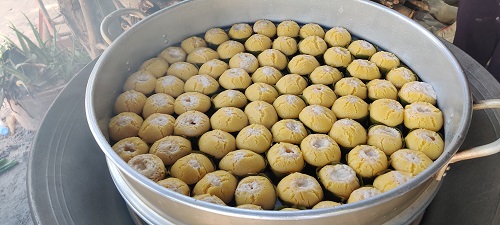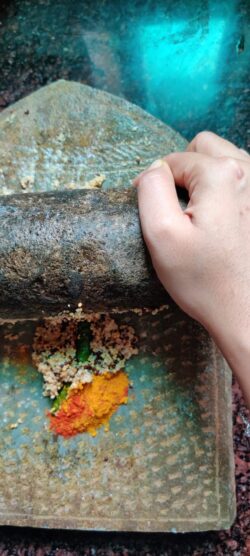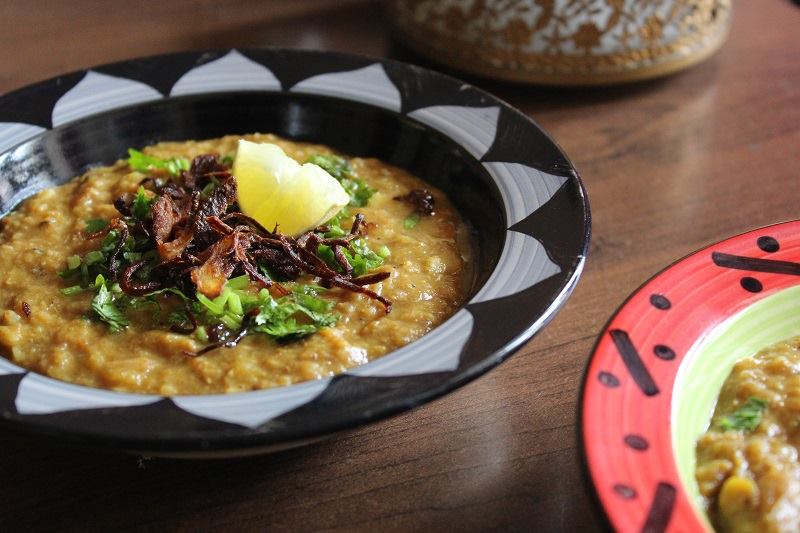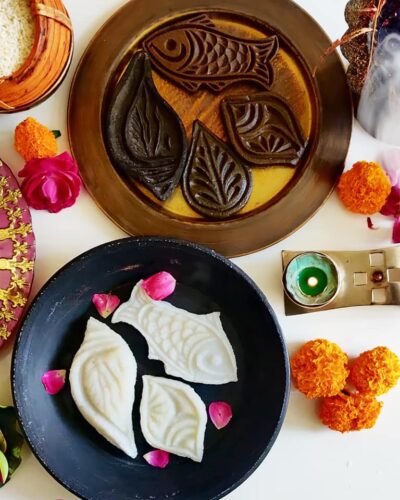
In the world of chhanch/chhapa (ছাঁচ /ছাপা) or moulded sandesh, there is a clear hierarchy. There is a norkeler chhanch (moulded coconut sandesh), there is chandrapuli (moulded half moon shaped sandesh of millk fudge and coconut), there is the refined narkeler chhanch, narkeler phol sandesh (fine coconut sandesh and fruits made of coconut) and fudgy kheerer sandesh (caramelised milk fudge sandesh), there is shada kheerer chhanch (ivory hued milk fudge sandesh) and then there is the GANGAJALI!
The narkeler gangajali is made mostly into naru (laddoo), and is a speciality of Bengali Vaishnav cuisine that percolated into the larger milieu. The gangajali naru was said to be a favourite of Chaitanya Mahaprabhu, and is still made quite a bit, especially in Bangal families during Bijoya Dashami and Kojagari Lokkhi Pujo. The gangajali sandesh is rarer; I feel owing to its tricky technicality, and the time and patience it demands.
The name comes from ‘ganga jal’, an allusion to its pristine white colour, the translucent apperance to which the coconut has to be cooked to, and because a well made gangajal should melt in the mouth like sweetened water. The sandesh demands focussed concentration, and the what differentiates good gangajali from a great one is the finesse with which each sandesh is moulded and the degree of its melt-in-the-mouth quality. Like with all chhancher sandesh, the thinner, the more uniform, the smoother the edges of the sandesh are, the finer the maker’s skills. In which, I aspire to be like my Pishimoni, dad’s younger sister who can unmould unbelievably thin gangajali sandesh, which is a miracle to pull off.
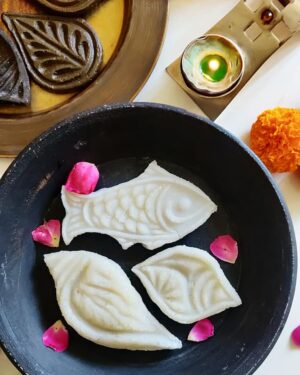
Making and acing a gangajali has been in the plans for a while now but I find it so intimidating that I kept postponing it. Finally, did it for this Kojagari Lokkhi Pujo, and I would be lying if I say that I am quite proud of myself!



